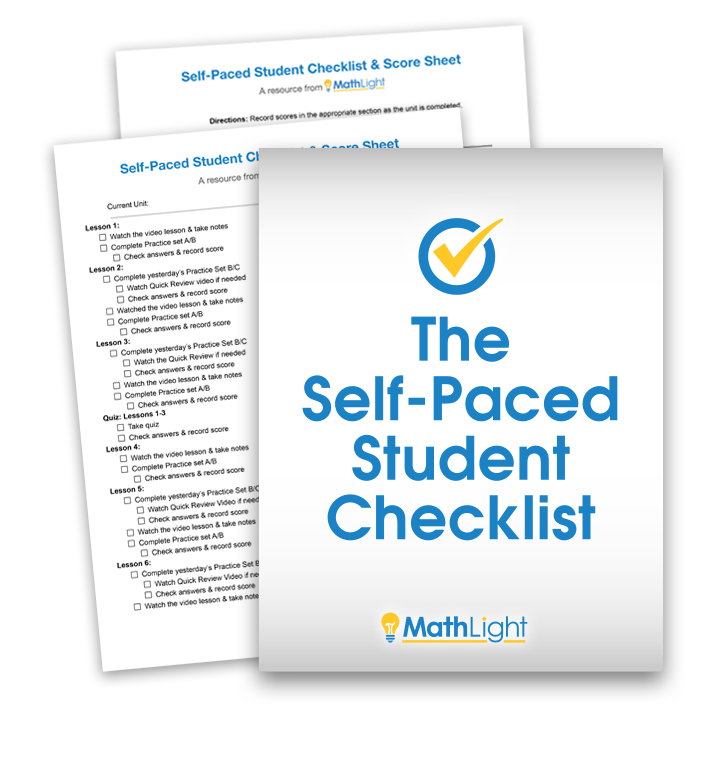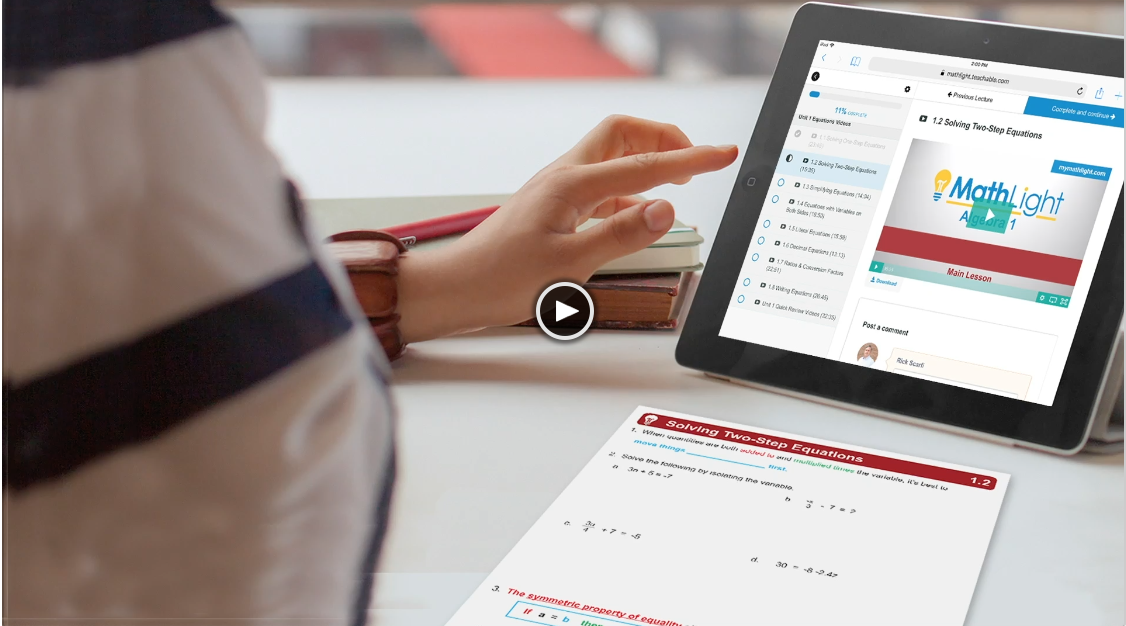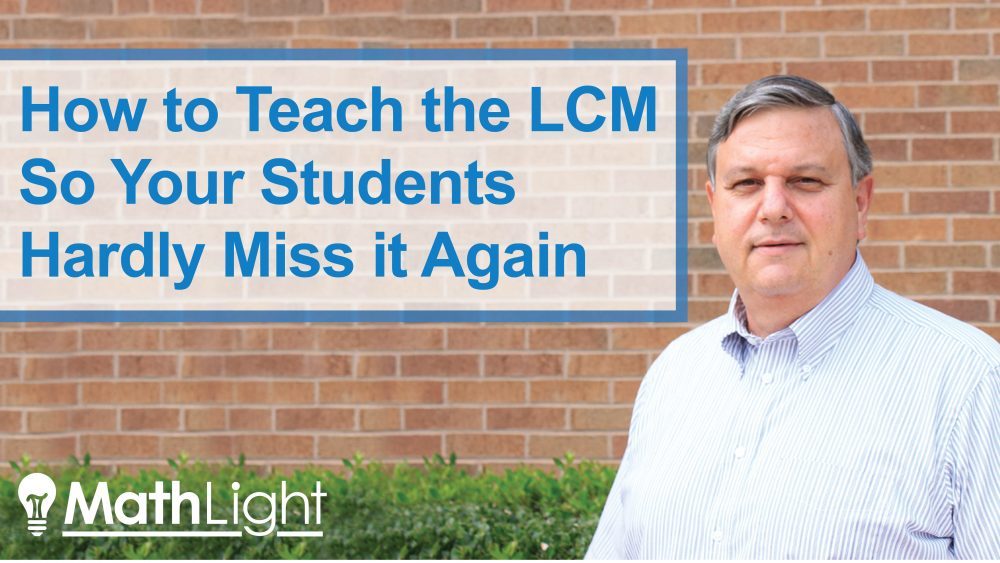Homeschool math gets tricky when you get into the upper levels! Gone are the days of simple arithmetic. Now you're moving on to graphing, solving complex equations. PLUS, what's this about there being new ways of doing things?!
MathLight Video Lessons make teaching- and learning- so much easier!
We combine tried-and-true best practices with updated methods to ensure your homeschooled student gets the best of both worlds.
How does this freebie sound? You can getting 300+pages of homeschool math resources PLUS access to over 10 hours of video content at no cost to you! Just tell us where to send it! Get the totally FREE MathLight Introductory Super Bundle for Homeschoolers HERE
Still, you might be wondering if you're leaving any valuable learning opportunities on the table even after your MathLight homeschool math lessons are up and running. That's why today we're bringing you our top tips to ensure MathLight video lessons bring math success for your homeschoolers.
Tips to Ensure Homeschool Math Success With MathLight Video Lessons:
- Print the note sheets. Your student will need access to the day's note sheet for every lesson. Print those pages ahead of time and have them easily accessible to your child. Consider keeping a notebook and 3-hole punch handy! Not sure about hand writing notes? There are lots of benefits to your student's math retention! You can read more about those benefits HERE.
- Make sure you (and your student) can access the videos. Follow the steps outlined in the "Video Access and Unit Contents" document found inside the unit folder you downloaded. Email us at [email protected] if you have any problems getting up and running.
- Require students complete the note sheets while watching the video. The note sheets make it easy for your student to follow along since they match what is used in the videos. Plus, videos can be easily paused or replayed from any point to catch details that may have been missed. Bonus: when he shows you a completed notes sheet you know your student has watched the entire video!
- Give plenty of time to practice. MathLight provides 3 levels of practice sets for its Pre-Algebra and Algebra 1 units. Level A is for beginners, B matches an intermediate understanding, and C is for in-depth/advanced students. We suggest having your child complete two of these. Choose from either practice set A/B directly following the day's notes. Then, complete the second set (choose from level B/C) as a warm-up before learning the next day's instruction. Research shows there are many benefits to "forgetting" and being forced to recall prior information. Therefore, completing a second practice set is one way you can solidify content knowledge. Read more about MathLight differentiated practice sets in this blog post.
- Make checking answers a time for learning. Our kids can learn so much from their mistakes. Yet, it often requires clear and intentional direction from nearby adults to make these learning opportunities a habit. With that in mind, we suggest having your student check his/her own work against the answer key. Then, don't allow Savannah to move on until she can explain WHY it was wrong. Was a negative sign forgotten? Did numbers get added incorrectly? Identifying the mistake clearly really helps make the learning stick.
- Use quizzes as a chance to see if the learning "stuck". You can minimize quiz stress and help your student see quizzes for what they are - a chance to see if the learning "stuck." In order to do this, however, your attitude toward quiz scores may need to change. Remember, good scores reveal the content was mastered and poor scores simply mean a little more practice is required. Live that reality out.
- Quick Review Videos give a chance for extra practice. Watching Quick Review videos are the perfect thing after a poor quiz grade. Instruct your student to pause the videos as Rick works through the examples. Then, have him/her work the problem out on their own. Finally, press play to watch as Rick's work is revealed. Remember, sometimes the steps may be slightly different (your student moves the variables to the left of the equal sign and Rick moves them to right). However, your child should still wind up with the answer shown in the video as long as his/her steps were all mathematically correct.
- Put students in the driver seat at review time. Every MathLight unit includes a review page. Over time your student will own their final grade if they know ultimately that they are responsible for the time spent reviewing. It may require a few times of falling flat, but the end reward is worth it!
- Tests sometimes require retakes. Even the best student can have an off day. Create your own retake simply by pulling questions off unused practice sets (make sure you match the format of the test!) to create your own retake test. As a result, you still have the problems worked out since every practice set has an answer key!
It may take a little time to get your student into these habits, but the rewards are SO worth it! Let us know what you think!






















